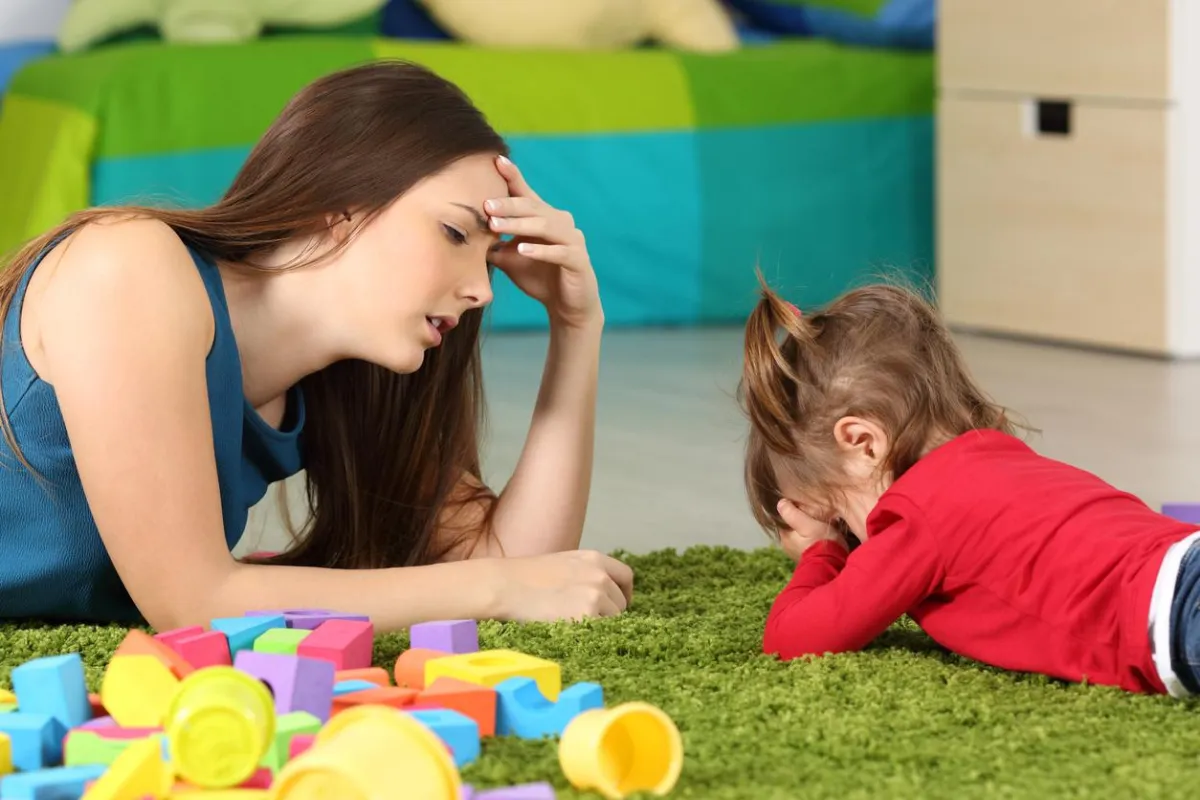
De-Escalating Challenging Behaviors
We've all been there at one point or another: a child becomes aggressive and hits us, kicks us, bites us, or spits on us. If you haven't had this happen to you, chances are it will at some point in your career.
It is hard to deal with these kinds of behaviors in the moment because our safety is being threatened by this child. Our bodies and brains will react to that with the intent to keep ourselves safe. In other words, we begin our own fight or flight response as a way to keep ourselves safe. Chances are, if a child is doing any of these behaviors to us, they are also in a fight or flight response.
So who does it help if both the child and the teacher are in a fight or flight response, and are acting on the thoughts that come into their heads in the moment? For the teacher, this could be thoughts like, "I don't make enough money to deal with this," or "No child is going to stand there and ___________ (hit me, kick me, bite me, spit on me)!" Those thoughts are enough to trigger a response in us that may not be the most helpful to the child's fight or flight response, because any fight or flight response from us will trigger an even bigger fight or flight response in the child.
For example, a child becomes mad at us because it is time to clean up and go outside. They begin yelling and trying to hit us. Our first thought is, "Oh no, I KNOW he did not just hit me!" And that leads us to yell at the child, grab his arm, try to get him to sit, etc. This, in turn, makes the child's fight or flight response even bigger, which increases our fight or flight response. Both fight or flight responses have escalated to a point where it is hard or even impossible to get out of it for either person.
Moving From Escalation to De-Escalation
The key to handling these types of challenging behaviors is to remember that we are in charge of our own upset. No matter what the child does, we have a choice about how we are going to respond to it. We can respond through our own upset at the situation, which escalates the fight or flight response in both us and the child. Or we can choose to respond through peace, love, and calm, which can de-escalate the fight or flight response in both of us.
"Really?" I hear you asking, "You want me to respond to this child who is kicking and hitting me with LOVE? This child isn't listening and isn't respecting my authority as their teacher, and you want me to respond with LOVE? You have lost your mind. I am not going to let any child just hit or kick on me like this!"
And believe me when I say that I am not asking you to just let a child hit or kick you. What I am asking you to do is recognize that out of the two of you, you are the one that has the skills and ability to calm yourself down and handle the situation differently. Children do not have the self-regulation skills that adults have. They haven't been taught those skills yet. So it is easier for us to stop and breathe and calm ourselves down in that moment than it is for a child to. And if we stop and breathe and calm down, we can look at the situation differently. We can recognize that the reason why the child is hitting us is because they are experiencing a fight or flight response. But why? What caused them to go into fight or flight?
Behavior is a form of communication. If I do something, chances are there is a reason why. I'm writing this blog post because I want to give teachers the resources they need to be able to handle challenging behaviors. I went to work today because I need to make money. I cleaned my house because it was getting dirty.
The same is true of children. If they begin kicking or hitting, there is a reason why. And in order for us to be able to help them learn how to handle their emotions better, we have to figure out the reason why they are acting the way they are. Sometimes the reason isn't apparent. Sometimes behavior seems to come out of the blue. But if we look closely at the situation and events that led up to the behavior, we can usually find something that happened that triggered the fight or flight response in the child.
In our example above, the child was told it was time to clean up to go outside. Maybe that child was enjoying what they were working on and did not want to clean up. Maybe they don't like cleaning up (I mean, who does?) and they don't want to do it. Maybe the transition of the entire class cleaning up feels too chaotic and they are dealing with sensory overload. Any one of these is a possible answer to the question of why the child entered fight or flight. Some children may not have a hard time transitioning from one activity to another, but a lot of children do have a hard time with it. So what can we do to de-escalate this situation and make the transition as smooth as possible?

The first thing we need to do is calm ourselves down. It is very much like the situation where you are flying on a plane and when they go over the safety rules they say to make sure you put in your oxygen mask first before you try to help someone else. You are not going to be able to help a child calm down if you are not calm. So make sure you stop in that moment and take a deep breath. You can even stop the whole class and say, "I'm feeling a little out of control. Can everybody help me take a deep breath?" Not only will this reinforce the skills you want them to learn, but it will help calm the mood of the whole classroom in that moment. Once you are calm, then you can help the child, because it is important that you are not coming at the child in a big, overstimulating way. Approaching them in a calm manner will keep from further escalating their own fight or flight response. Offer to give the child a hug or take their hand. Ask what is wrong, or if they don't answer, offer them a calming activity to help reground them and diffuse that fight or flight response. Yes, I know it is clean up time, but in order to help this child clean up, we have to make sure they are not in fight or flight. Sometimes that requires a redirection to another activity.
Once they are calm, we can then talk them through the next step of the day. "We drew a nice picture! Now can you help me clean up this stuff so that we can go outside?" Avoid judgmental or demanding language, because that will start the fight or flight spiral to begin again. Keep yourself calm, and typically the child's demeanor will follow suit. Also, asking the child to help you do something, such as cleaning up, is more likely to get the response you want because you are asking them to be a helper, which does not carry with it any judgment or demand. It lets them know that you value their role in the classroom as your helper and that you will also be there helping them through the clean up process.
Remember to Access Your Calm
The key to de-escalating challenging behaviors is to remember to access your own calm. This is the single most important thing you can do when a child is in fight or flight and exhibiting challenging behaviors. Once you make that a habit, it will be easier for you to help the child that needs it.

